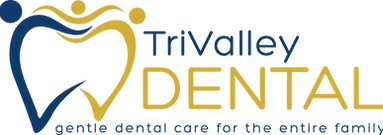Orthodontic headgear is used to correct a severely abnormal bite, correct dental overcrowding, and support normal jaw alignment and growth. It is typically recommended for younger children whose jaws are still developing.
Types of Orthodontic Headgear
Whereas braces are permanently fixed on the teeth, headgear can be removed and is worn partially outside the mouth. Depending on the patient’s needs, there are three types of orthodontic headgear your orthodontist can choose from:
- Cervical Pull: This type of headgear is used to correct a malocclusion called an overjet, which appears as a protruding top jaw and front teeth. This device can also correct overbites, which is when the top and bottom teeth don’t meet properly. Cervical pull headgear uses straps that wrap around the neck and attach to the braces in the mouth.
- High Pull: This type of headgear corrects an overjet or overbite. Straps are attached from the upper jaw to the top and back of the head. This device is also used in children with excessive jaw growth in the back of their mouth.
- Reverse Pull: This type of headgear is used for underdeveloped upper jaws or underbites. When the lower teeth jut out past the upper teeth, it results in an underbite. This device uses rubber bands to attach to braces on the top teeth.
Using Orthodontic Headgear
It is vital to follow the orthodontist’s instructions when using headgear. Successful treatment can only be achieved if the device is worn anywhere from 12 to 14 hours a day, sometimes longer. A strict routine is important, for even small lapses will inhibit the rate of treatment. In total, headgear may be required anywhere from one to two years.
Orthodontists understand that wearing such a device in public may be embarrassing. That is why they recommend wearing the headgear promptly after school, through the rest of the evening, and overnight.
Discomfort is normal, especially when using headgear for the first time. At each visit, the orthodontist will adjust the headgear, and it could feel like there is more pressure being applied on the jaw. This sensation is very temporary. If discomfort does not lessen, over-the-counter pain medication may be taken to relieve pain. Additionally, cold foods such as popsicles may provide some relief.
